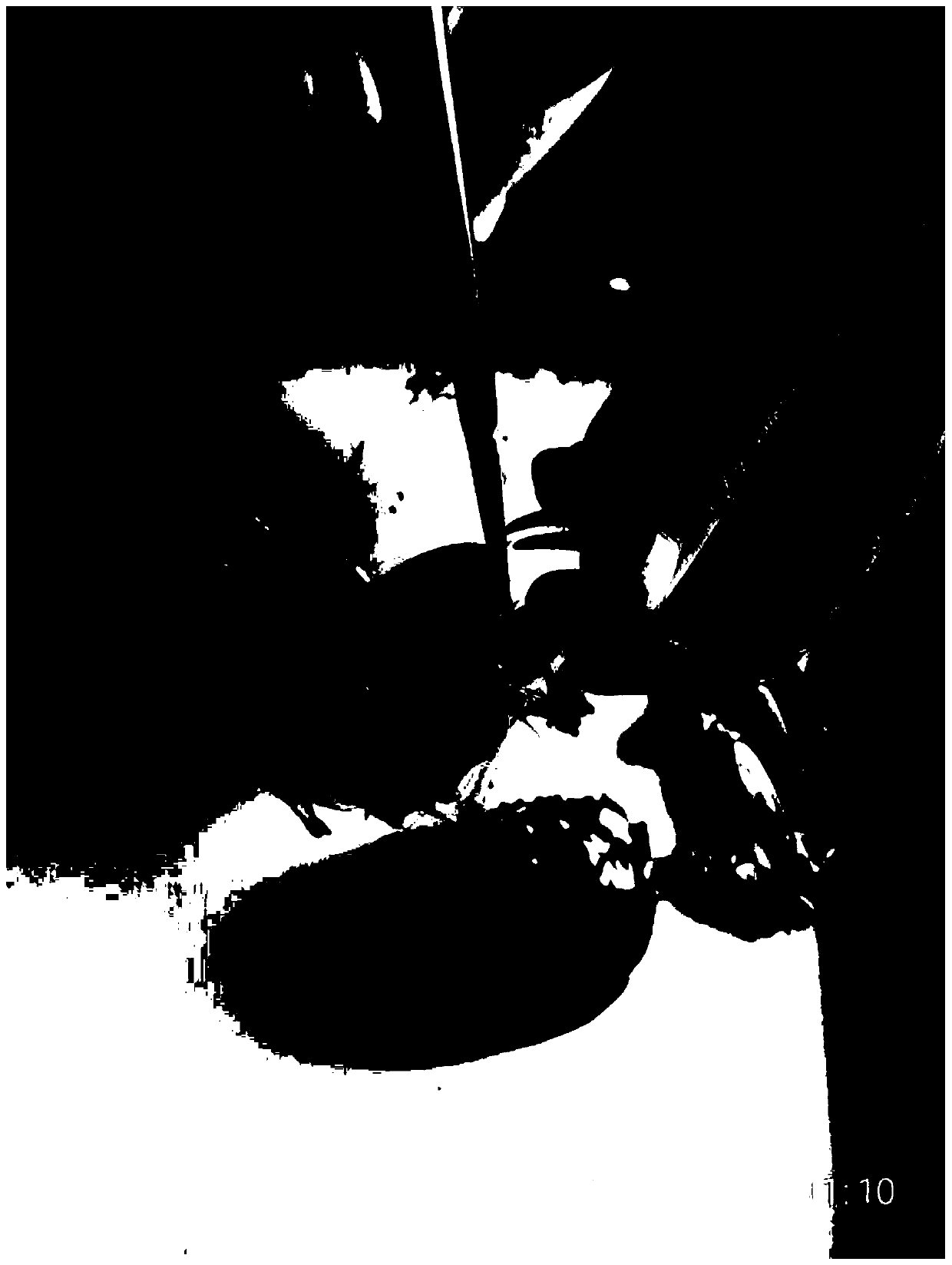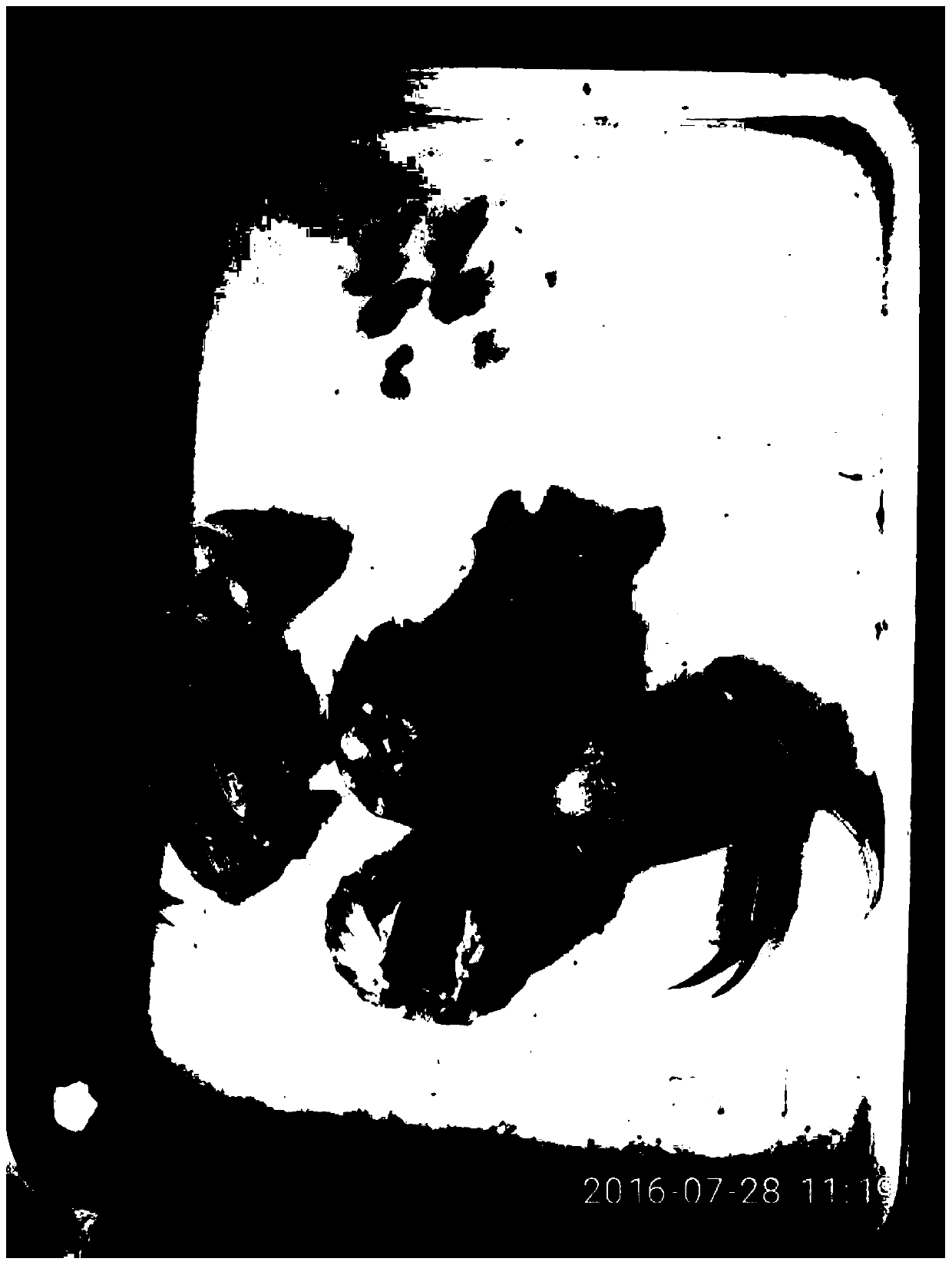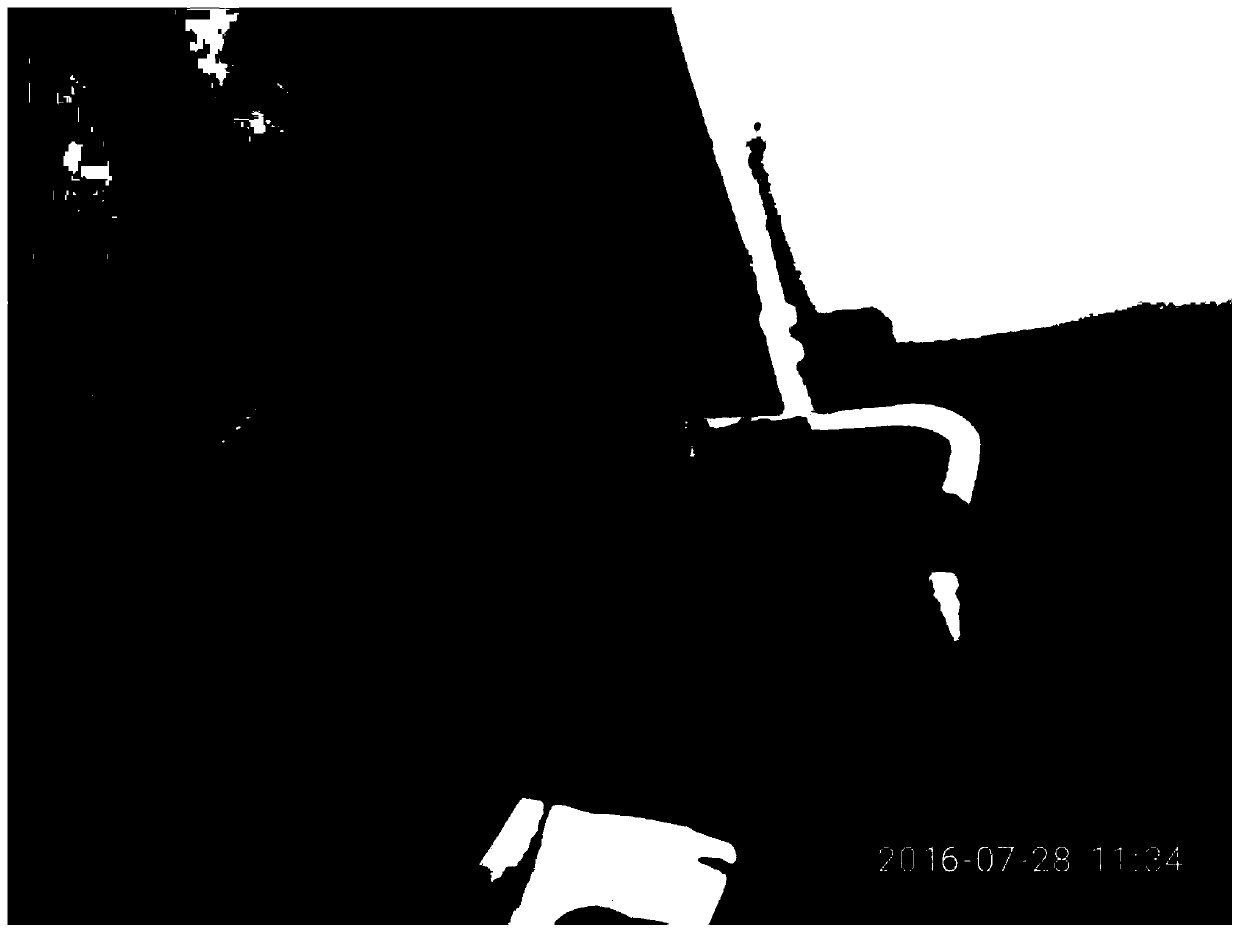A kind of preparation method of crab aquatic animal skinned specimen
A technology for aquatic animals and specimens, which is applied to the preservation, application, and animal husbandry of human or animal bodies. It can solve problems such as unsuitability for crabs, deviations in specimen observation, and color fading, so as to achieve good anti-mold and anti-corrosion effects, and avoid The carapace is elegant and the color is natural
- Summary
- Abstract
- Description
- Claims
- Application Information
AI Technical Summary
Problems solved by technology
Method used
Image
Examples
Embodiment 1
[0043] The preparation of embodiment 1 Chinese mitten crab specimen (1)
[0044] Preparation of tools and reagents: dissection tools, including scissors, tweezers, syringes, keys, brushes, absorbent cotton balls, fine wire, dry towels, preservatives (formalin 5%), antiseptic powder (phenol, alum, camphor press 1 :3:0.1 weight ratio configuration).
[0045] In vivo sampling: take out the Chinese mitten crab used in the experiment, freeze it to death at -80°C, cut off the mandible with dissecting scissors, cut carefully along the seam between the carapace and the trunk, separate the carapace from the trunk, and then carefully cut it with a medicine spoon. The internal organs such as the stomach, hepatopancreas, and ovary were removed, and then a brush was used to extend from the abdomen into each appendage, remove the muscle tissue in the appendage, and use a syringe to absorb distilled water and rinse repeatedly until the muscle tissue was completely removed. Use a syringe to ...
Embodiment 2
[0046] The preparation of embodiment 2 Chinese mitten crab specimens (two)
[0047]Preparation of tools and reagents: dissection tools, including scissors, tweezers, syringes, keys, brushes, absorbent cotton balls, fine wire, dry towels, preservatives (formalin 5%, sodium salicylate solution 5%), preservative powder (Phenol, naphthalene powder, alum, and camphor are configured in a weight ratio of 1:3:3:0.1).
[0048] In vivo sampling: take out the Chinese mitten crab used in the experiment, freeze it to death at -80°C, cut off the mandible with dissecting scissors, cut carefully along the seam between the carapace and the trunk, separate the carapace from the trunk, and then carefully cut it with a medicine spoon. The internal organs such as the stomach, hepatopancreas, and ovary were removed, and then a brush was used to extend from the abdomen into each appendage, remove the muscle tissue in the appendage, and use a syringe to absorb distilled water and rinse repeatedly unt...
Embodiment 3
[0049] The preparation of embodiment 3 Chinese mitten crab specimen (three)
[0050] Preparation of tools and reagents: dissecting tools, including scissors, tweezers, syringes, keys, brushes, absorbent cotton balls, thin iron wires, dry towels, antiseptic (formalin 5%), antiseptic powder (phenol antiseptic powder).
[0051] In vivo sampling: take out the Chinese mitten crab used in the experiment, freeze it to death at -80°C, cut off the mandible with dissecting scissors, cut carefully along the seam between the carapace and the trunk, separate the carapace from the trunk, and then carefully cut it with a medicine spoon. The internal organs such as the stomach, hepatopancreas, and ovary were removed, and then a brush was used to extend from the abdomen into each appendage, remove the muscle tissue in the appendage, and use a syringe to absorb distilled water and rinse repeatedly until the muscle tissue was completely removed. Use a syringe to draw a sufficient amount of antis...
PUM
 Login to View More
Login to View More Abstract
Description
Claims
Application Information
 Login to View More
Login to View More - R&D
- Intellectual Property
- Life Sciences
- Materials
- Tech Scout
- Unparalleled Data Quality
- Higher Quality Content
- 60% Fewer Hallucinations
Browse by: Latest US Patents, China's latest patents, Technical Efficacy Thesaurus, Application Domain, Technology Topic, Popular Technical Reports.
© 2025 PatSnap. All rights reserved.Legal|Privacy policy|Modern Slavery Act Transparency Statement|Sitemap|About US| Contact US: help@patsnap.com



